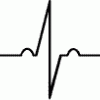SENS have weighed in on NR supplementation with their own analysis of the mouse research on NMN (Posted 23rd November 2015):
From the article:
The studies showing benefits of NR supplementation in mouse models of disease have used doses of 400-500 milligrams of NR per kilogram of mouse body weight. Even after adjusting for the different metabolic rates of mice and humans, an approximate equivalent adult dose would range from 2000 to 4000 milligrams of NR per day. Commercially-available NR supplements contain between 75 and 125 mg NR per capsule, at a cost of roughly 0.6-0.8 cents per milligram of NR; to experiment with even the lower end of the human-equivalent dosage range would thus involve swallowing 18-30 NR pills a day, at a cost of $400-550 a month.
Oh... and is this thread a big advertisement for Chromadex? Because to me it certainly sounds like it.
A
Hmmm... this does sound like a good point to bring up that I hadn't considered. Why sell a supplement that is so underpowered? Are they expecting some to be able to afford the mega doses to actually take that many capsules while others just waste their money? Or are there actual benefits to taking small doses of NR? I've heard alot of testimonials to the effect that it works slowly over time... is that true? Or are we to assume we're being given to placebo effect?
Did a quick scan of in vivo mouse studies with full-text available on pubmed and all of them I could find administered at 400 mg/kg of body weight in feed. So Anthony's absolutely right about that. But all the studies I saw looked for quick results... most in the 1 to 4-week range with the longest at 16 weeks. So I would assume that the best to be expected at a lower dose would be a longer period before similar results. Assuming you are taking it or mixing it with your meals as was done in those mouse studies.
But that may be sub-optimal. Based on a number of abstracts I saw dealing with digestion of NR. They all point to digestion and absorption taking place in the small intestine by enzymatic action. And stomach acids destroying much of the NR before it reaches the small intestine. That suggests that an enteric acid-resistant capsule might raise the amount of NR that reaches the small intestine, thereby increasing the amount absorbed. Something like these: http://www.amazon.co.../dp/B014EPR180 ... which look quite a bit like those used by NR vendors, although nothing about that is mentioned on their labels or literature. Other things that might help are minimizing amounts of stomach acid by taking NR on an empty stomach, perhaps taking a fiber supplement maybe an hour earlier to clear fatty acids and bile, taking it with ice water to lower stomach temperature, or perhaps even taking it with an antacid. Another possibility is taking it with or shortly after a probiotic to enhance enzymatic action.
Just some thoughts.
Howard
































 This topic is locked
This topic is locked




















